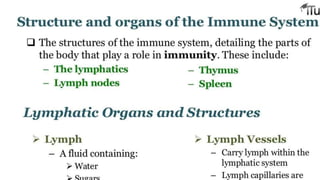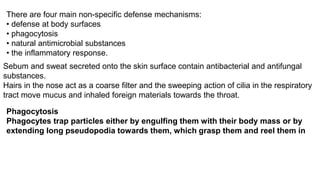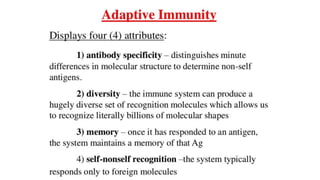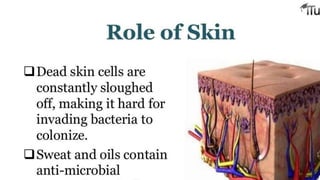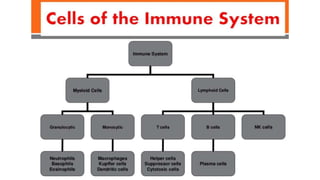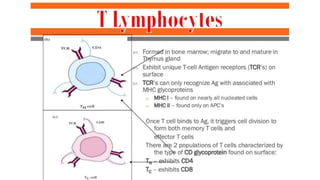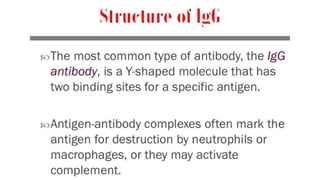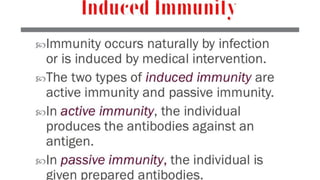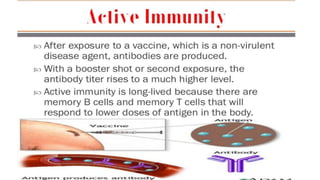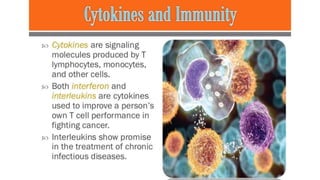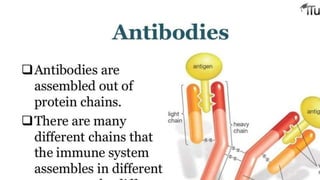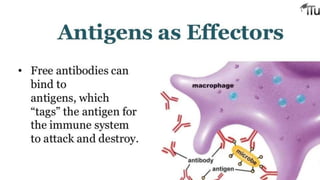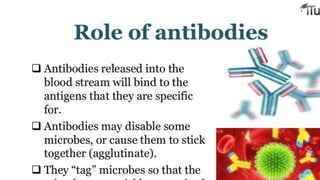immune system..pptx
- 6. There are four main non-specific defense mechanisms: • defense at body surfaces • phagocytosis • natural antimicrobial substances • the inflammatory response. Sebum and sweat secreted onto the skin surface contain antibacterial and antifungal substances. Hairs in the nose act as a coarse filter and the sweeping action of cilia in the respiratory tract move mucus and inhaled foreign materials towards the throat. Phagocytosis Phagocytes trap particles either by engulfing them with their body mass or by extending long pseudopodia towards them, which grasp them and reel them in
- 7. natural antimicrobial substances Hydrochloric acid. Lysozyme. present in granulocytes, tears, Antibodies. These are present in nasal secretions and saliva Saliva. Interferons. -produced by T-lymphocytes and by cells that have been invaded by viruses. They prevent viral replication within cells and the spread of viruses to other cells. The inflammatory response The cardinal signs of inflammation are: redness heat pain swelling loss of function
- 9. Increased blood flow Following injury, both the arterioles supplying the damaged area and the local capillaries dilate, increasing blood flow to the site.
- 12. T lymphocyte… processed by the thymus gland, T-lymphocyte has been programmed to recognize only one type of antigen, T-lymphocytes provide cell-mediated immunity, B-lymphocytes. These are processed in the bone marrow. Their role is in producing antibodies (immunoglobulins), which are proteins designed to bind to and cause the destruction of, an antigen. As with T lymphocytes, each B-lymphocyte targets one specific antigen; the antibody released reacts with one type of antigen and no other. B- lymphocytes provide antibody-mediated immunity


